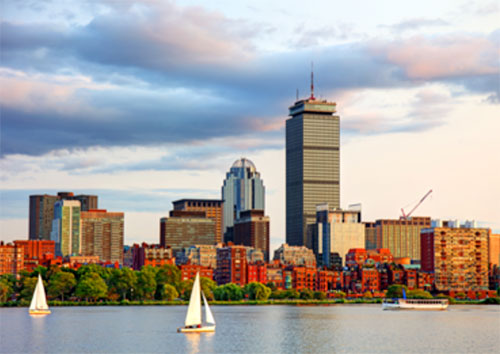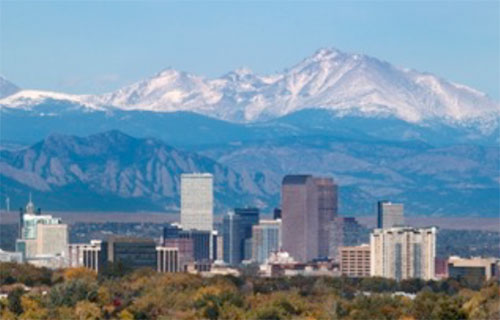FOEP at the March and April Meetings 2019

FOEP Invited Session
E60: Sharing Science: How to Communicate with the public
(http://meetings.aps.org/Meeting/MAR19/Session/E60)
Room BCEC 258A
Tuesday March 5, 2019
8:00 a.m. – 1:00 a.m
8:00-8:36 a.m
E60.00001: Science Blogs and Talking Dogs: Reflections on 17 Years in Social Media
Chad Orzel
In this talk I will discuss lessons learned about physics and science communication in the online world, drawing on my experiences since starting a weblog to discuss physics in 2002. This will include pros and cons of various media, including blogs, Twitter, and Facebook, and a discussion of the opportunities and risks these technologies offer for physicists interested in engaging with a broad public audience.
8:36-9:12 a.m.
E60.00002: Science News Online: Finding the Signal in the Noise
Invited Speaker: Allison Eck
TBD
9:12-9:48 a.m.
E60.00003: Adventures in Podcasting
Invited Speaker: Sean Carroll
TBD
9:48-10:24 a.m.
E60.00004: Science Festivals and Face to Face Communication
Invited Speaker: Ben Wiehe
TBD
10:24-11:00 a.m.
E60.00005: Tough crowd: Reaching beyond the usual science-interested audiences
Invited Speaker: Ray Jayawardhana
For those involved in science communication and outreach, engaging with audiences who usually do not seek out science events/media/venues presents interesting challenges. I will reflect on those challenges, drawing upon a few attempts to bring science content to unexpected places.
FOEP Sponsored Session (http://meetings.aps.org/Meeting/MAR19/Session/H47)
Room BCEC 213
Tuesday March 5, 2019 2:30 – 4:30 p.m.
2:30-2:42 p.m.
H47.00001: Lessons learned from outreach grant administration
James Roche
TBD
2:42-2:54 p.m.
H47.00002: Physics is for Everyone: How to Market Physics for The Masses
Phoebe Sharp
Marketing science for the general public is challenging. As physics students, we understand the importance and need for science education, so reaching out to those outside of our physics and science communities is a great way to share our curiosity and excitement for how the world works. This summer, I worked on providing accessible and interesting content for patrons of the Physics Central website, a site that works to encourage curiosity in physics through comics, blog posts, and other media outlets. That included writing scientific articles about often overlooked concepts in physics, as well as researching ways to make the website more eye catching and relevant.
2:54 - 3:06 p.m.
H47.00003: The US Physics Team: Training for competition and building community
Jiajia Dong
Since the founding of the US Physics Team in the mid-1980s, the team coaches have had the mission of selecting and training the top US high school physics students to compete in the annual International Physics Olympiad. Over the decades, the coaches have worked hard to encourage participation from high schools around the nation, to design challenging training materials, and to build a growing community of students who share their curiosity and passion in physics. The bond built through learning physics together remains strong when the students later find their roles in the society such as physicists, engineers, lawyers, and doctors.
Recently celebrating its 30th anniversary, the Team continues to try to broaden its impact, by reaching more students who are not only interested in learning physics, but enthusiastically embrace the challenges of problem-solving, finding efficient, elegant, and insightful solutions, and discovering new physics. We share the story of the US Physics Team, and invite your contribution to the growth of the program.
3:06 - 3:18 p.m.
H47.00004: LabEscape, A Science-Based Escape Room: Where We Are, and How We Got Here
Paul Kwiat, Ian Call, Eric Hudec, Rebecca Wiltfong
Based on APS seed money, we have set up what we believe is the world’s first science-based escape room: LabEscape. By interacting with physics components in the room, participants uncover clues that allow them to solve the mystery of missing quantum physicist Professor Alberta Schrodenberg, and escape! Our goal is to show that science can be useful and accessible (no prior background is assumed), as well as beautiful and even fun! The room is operated by undergraduate STEM students, and most of the puzzles were created by them as well, all based on physics phenomena, including polarization, refraction, induction, lasers, etc. Along the way the Agents directly experience some key aspects of scientific research, and are exposed to basic themes in quantum information. To date we’ve had nearly 4000 participants, and received near perfect reviews. For more information, see LabEscape.org; to sign up at APS, visit LabEscape.org/APS/.
3:18 - 3:30 p.m.
H47.00005: LabEscape, A Science-Based Escape Room: Now What
Ian Call, Eric Hudec, Paul G Kwiat, Rebecca Wiltfong
Our science-based escape room has been operating in our local mall for over two years, and although not it’s primary goal, LabEscape has been an excellent laboratory for observing group dynamics (we’ve had ~800 groups go through), the impact of diversity, and the roles of curiosity, communication, and collaboration. We’ve developed several different scenarios with varying durations and varying degrees of success. We’ll discuss what has and hasn’t worked, and our efforts to expand to an even wider audience, e.g., in other cities, science centers, etc. One recent addition is the inclusion of a portable version, which we debuted at the August, 2018 AAPT conference, and have now brought to the APS March meeting.
For more information, see LabEscape.org; to sign up at APS, visit LabEscape.org/APS/.
3:30 - 3:42 a.m.
H47.00006: What's been happening at FunSizePhysics?
Shireen Adenwalla, Jocelyn Bosley, Leigh Smith
www.funsizephysics.com is a website created with the express purpose of advertising exciting new developments in condensed matter physics to the tax paying public. In addition, the website was designed to be a convenient place in which to collaborate on and discuss a variety of outreach efforts. The website is unique in that it incorporates research descriptions written by the researchers themselves for a broad audience, unlike numerous science blogs and/or websites. We describe the ongoing efforts to present current and ongoing NSF-funded research to the public in ways that engage a broader audience of non-experts and to make the website a resource for NSF PIs to develop best practices for outreach activities to K-12 students and the general public. We have also embarked on an ambitious program to impact the ability of present and future scientists to communicate with the public, using professional science writers as teachers and modelers for science communication. The ambitious aim is to change how condensed matter physicists communicate with the public.
3:42 - 3:54 p.m.
H47.00007: Electron Microscopy: Building Nanoscale Knowledge and Community Connections
Sarah Goodman
Electron microscopy (EM) is not only key to solving the greatest challenges we face in the energy sphere, but it can also be a powerful tool for establishing connections between current and aspiring scientists as well as the public. The work of scientists and engineers is often portrayed as complicated and inaccessible, which can alienate the general public and deter students from pursuing the STEM fields, particularly those who don’t often see role models like themselves as scientists. Here, I will present the results of three types of community outreach events that used EM to provide both the public and K-12 students an opportunity to engage in the same type of work that researchers do. In two events, the general public was invited to experience EM demos and use the tools themselves, which allowed the process and tools of research become demystified. In another event, a group of middle school students used the transmission electron microscope to image gold nanoparticles at atomic resolution. By including the community in our everyday research activities, we can work towards building trust between scientists and the public to pave the way for stronger science policy in the future
3:54 - 4:06 p.m.
H47.00008: Physics for all ages: Texas A&M Physics Show
author not Tatiana Erukhimova
attending The Texas A&M Physics Show started in 2007 and has been attended by 22,000 people since then. We offer 40-50 Shows per year. The target audience for the Physics Show is preK-12. The Show lasts 90 min and consists of three parts: 45-60 min Show in the Auditorium, 20 min interactive Hands-on activities in the lobby, and the depth charge outside. Examples of demonstrations that we share with children include clouds, lightning, and magic bubbles, solid air and liquid oxygen, jet propulsion, levitating superconducting trains and flying toilet paper and many more. The presentation is tailored to groups of different ages and “attention spans”. We’ll discuss pros and cons of starting a similar program and what it takes to run it all year round.
4:06 - 4:18 p.m.
H47.00009: How to involve citizen scientists in your research
James Freericks
Citizen science is often viewed as crowd science where citizens are employed in labor intensive data collection or in other tedious activities required for complex research. But the advent of MOOCs makes it easy to identify, recruit, and collaborate with talented citizen scientists on any research problem. The MOOC audience provides a highly educated and motivated space to recruit research partners from. I will describe a number of different citizen science projects I have been involved in in the past year which have lead to three publications and a number of ongoing projects. I will illustrate how one can recruit research partners and examine how one can find appropriate projects to collaborate on. Whether you are in need of research collaborators or just assistance in your research projects, recruiting citizen scientists provides a new resource to advance your research agenda. I recommend it as a best practice to everyone. It is a wonderful way to give back to the community, provide broader impacts of your work, and get more research finished.
4:18 - 4:30 p.m.
H47.00010: Inventing the Future: How to Make Stuff that Can Change the World
Ryan Baumbach
Condensed matter physics and materials science are topics that persistently defy efforts to engage the public imagination. This is despite the fact that modern society thrives due to the development of thousands of new materials that are routine and essential parts of most people’s everyday lives. In this talk I will describe progress towards creating video content that is designed to educate and entertain as it tells the story of how a material is conceived, created and embedded into our lives. I will not only present the resulting video, but will also describe the unique collaboration that has led to its production, which involves scientists and science communicators at the National High Magnetic Field Laboratory and filmmakers, actors, and artists at the Florida State University College of Motion Picture Arts. I will present insights gained from this new paradigm for producing science content for public consumption.
Free beer and snacks for FOEP members at the APS Happy Hour hosted by APS Public Engagement
Every year at March Meeting FOEP in conjunction with the APS Public Engagement Department hosts a happy hour (free drinks!). The goal is to get people at all levels, from undergrads to tenured professors to public engagement professionals, together to talk about their work and to build relationships. The event started as a way to build a community of outreach mini grant recipients but has grown far beyond that. This year's event will be held on Tuesday, March 5th from 5:30-8, location TBD. Stop by the Public Engagement section of APS village to find out more. Last year's event was hosted at Prank Bar and featured great conversations and a few new collaborations. The event draws roughly 75 physics outreach enthusiasts each year. If you are attending 2019’s March Meeting be sure to look for information on the happy hour and join us for public engagement make-and-takes, new outreach ideas, and delicious hot wings. If you are looking for collaborators or just a group to geek out on demos with, this is the place.

